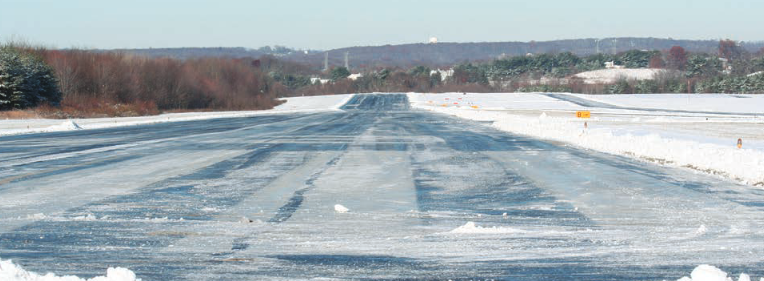 So, last winter I remember vividly the moment when I was laying in bed after a visit to my chiropractor thinking, “the most dangerous thing to me losing a medical might just be an icy airport ramp.”
So, last winter I remember vividly the moment when I was laying in bed after a visit to my chiropractor thinking, “the most dangerous thing to me losing a medical might just be an icy airport ramp.”
Ok, so a little back story.
I had just finished a flight and was putting the plane away. I took lots of care doing this.
The ramp was icy, so I put the ice cleats on my shoes that I kept in my truck for exactly these conditions. I took my time hooking up the tug for the plane, and slowly pushed it back into the hangar. I didn’t want to fall on the ice or slide the plane into anything that would cause damage.
Successful, I close the hangar door, locked up, took the cleats off my shoes, and climbed to my truck. Off I went toward home.
But about two miles away, I noticed I had forgotten my coffee cup, hat, and gloves, in the plane. So I turned around and headed back.
I parked in front of the hangar and hopped out to just run in quick and grab what I had forgotten.
But when I did so my left foot hit the ice and slid out completely.
I hit the ground hard on my left hip and back.
Laying there, I thought, “am I hurt?” or “is this just going to hurt?”
Adrenaline works well, and I hopped back up.
I proceeded into the hangar to grab the forgotten coffee cup, hat, and gloves, but couldn’t help but notice that it sure felt like my back had been strained in the fall. The good news was that I hadn’t hit my head or anything else on anything hard.
I climbed back into the truck thinking, “gee, my back is starting to hurt a bit.”
Ugg.
As I drove home, back starting to throb, I couldn’t help but remember the advice I had given hundreds of times to other pilots.
“The most dangerous place in aviation is an icy airport ramp.”
By the time I had gotten home it had begun to swell, throb, and generally feel pretty darn crappy. In fact, when I pulled into our garage, my range of motion had been restricted and I had to swallow my pride and call my wife, who was inside the house, to help me out of the truck and into the house.
I spent the next week in a combination of visits to my chiropractor, trying to stretch out a pulled muscle in my back that was straining a disc, and intermixing the Motrin and steroid prescribed by my primary physician. The reality was that a full recovery from the back strain took nearly a month. And I consider myself a lucky airport ramp survivor.
I have heard of, and seen in person many times the effects of a fall on a pilot on a preflight, walking to a plane, or while pulling an aircraft out of or back into a hangar when a ramp is icy. I know better and I still joined those ranks last year.
As we all approach another winter season, don’t join them yourself. I am certainly going to try to not do so this year.
Pulling a plane out of a hangar is an easy opportunity to slip and fall back and hit your back or head. Pushing a plane in is an easy time to fall forward if your feet slide out from under you.
If the ground isn’t dry and firm, get help. Use a tug. Or wait.
While most airports don’t add salt or sand to runway or ramp surfaces, you can use other tools to help you from sliding. Cleats on your shoes are super helpful. Chains on tires for tugs do a lot to help. Use tools instead of just brute force when it is slippery. Don’t take the chance at bouncing your noggin on the hard ground or pulling muscles you will need to keep flying. Work smarter, not harder, or less safe.
Here we all are starting another winter flying season.
Call this a Public Service Announcement (PSA) if you want, but be careful out there on those ramps.
The airport ramp when it is icy might in fact just be the most dangerous place you go as a pilot. Walking across one, pushing a plane in or pulling one out might be the most dangerous thing you do as a pilot. Take some precautions. Get some help. Don’t end up laying on your back on the ramp, out of flying for a bit as you recover, or worse.
